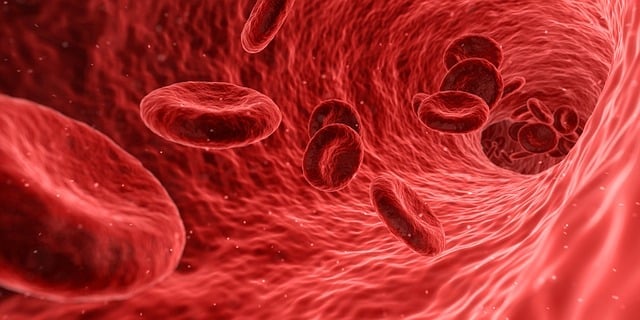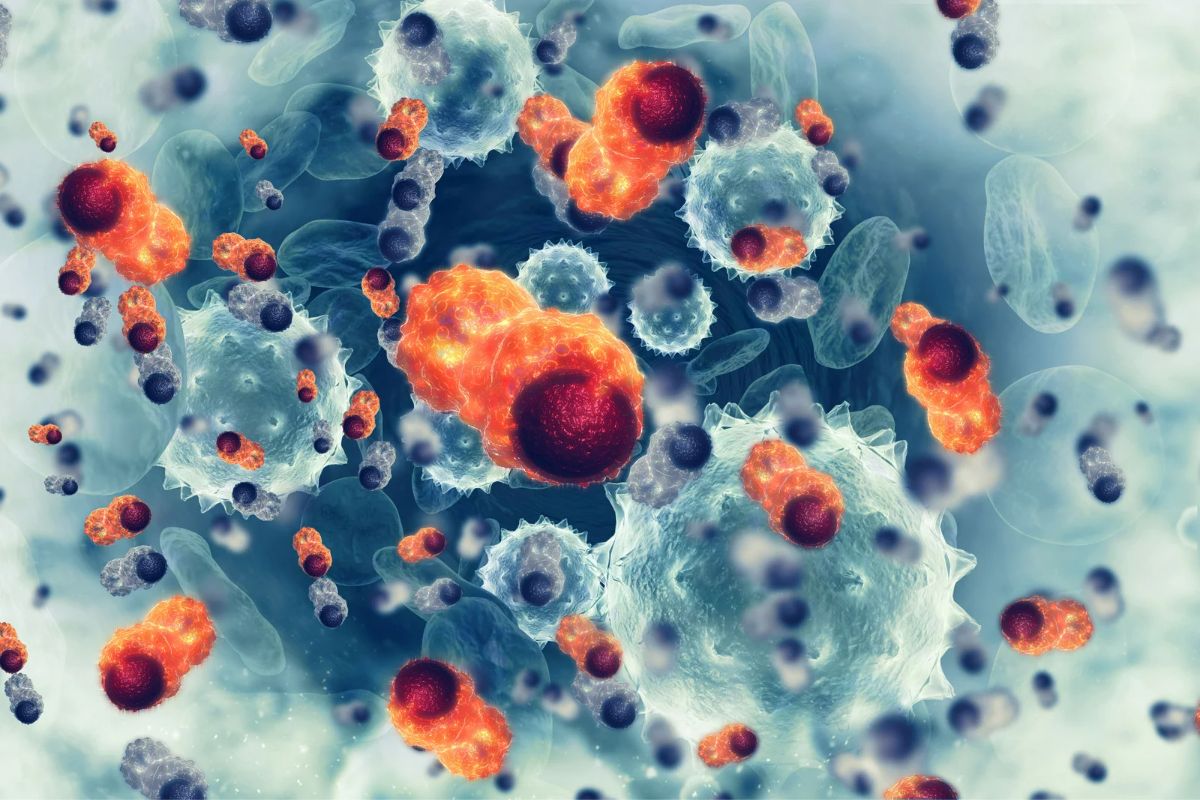Cell Therapy for Solid Tumors: An Innovative Approach to Cancer Treatment

Cancer remains one of the leading causes of death worldwide, with solid tumours representing a significant portion of cancer cases. Traditional treatments such as chemotherapy, radiation, and surgery have been the cornerstone of cancer therapy. However, the advent of cell therapy has ushered in a new era of cancer treatment, offering hope for patients with hard-to-treat solid tumours. Cell & Gene by Oxford Global takes a look at the mechanism, risks and advancements of cell therapy for solid tumours.
What is Cell Therapy for Solid Tumours?
Cell therapy for solid tumours involves the use of living cells to fight cancer. These cells can be derived from the patient (autologous cells) or a donor (allogeneic cells). This approach aims to harness the body's immune system to recognise and destroy cancer cells more effectively.
The concept of using the body's immune system to combat cancer dates back to the late 19th century, but it wasn't until the late 20th and early 21st centuries that cell therapies began to be developed and tested clinically. Advances in understanding the immune system and biotechnology have propelled cell therapy into the forefront of cancer research.
The benefits of cell therapy for solid tumours involve personalised therapy, as it is tailored to the individual's specific type of cancer, potentially leading to more effective treatment outcomes with fewer side effects compared to traditional therapies.
Types of Cell Therapies Used in Solid Tumours:
Several types of cell therapies are being explored for solid tumours, including:
- Tumour-infiltrating lymphocytes (TILs): These are immune cells extracted from the tumour, expanded in the lab, and then infused back into the patient.
- CAR-T cells: Genetically modified T cells with chimeric antigen receptors (CARs) that target specific cancer cells.
- NK cells: Natural killer cells are part of the innate immune system and can target tumour cells without prior sensitization.
How Does Cell Therapy Target Solid Tumours?
Unlocking the Power of the Immune System
Cell therapy represents a significant leap forward in oncology, especially in the treatment of solid tumours. This innovative approach leverages different types of immune cells, each with its unique mechanism of identifying and attacking cancer cells.
Mechanism of Action:
The core of cell therapy's effectiveness lies in its precision and adaptability. For instance, CAR-T cell therapy involves engineering a patient's T cells to express chimeric antigen receptors (CARs) that recognise and bind to specific proteins on the surface of tumour cells. This binding activates the T cells, enabling them to attack and destroy the cancer cells. Similarly, Tumour-Infiltrating Lymphocytes (TILs) are extracted from the tumour, where they have naturally migrated to combat the cancer. These TILs are then expanded outside the body and reinfused into the patient, where they continue their attack on cancer cells.
Types of Cells Used and Their Roles:
- CAR-T Cells: These are patient's own T cells, genetically modified to target cancer cells specifically. They are particularly effective in identifying and eliminating tumour cells that express specific antigens.
- TILs: Representing a more personalised approach, these cells are already fighting the tumour in the patient's body. Once isolated and expanded, they are reintroduced in greater numbers, enhancing their natural tumour-fighting capabilities.
- NK Cells: Natural killer cells play a crucial role in the innate immune system, targeting cancer cells without the need for prior sensitization. They can be used directly or modified to enhance their cancer-killing properties.
Delivery Methods:
The delivery of cell therapies can vary depending on the type and location of the tumour. Common methods include:
- Intravenous Infusion: This is the most common method, where cells are infused into the patient's bloodstream, enabling them to travel throughout the body and locate tumour cells.
- Direct Injection: In cases where the tumour is accessible, cells can be injected directly into the tumour mass, providing a concentrated dose of therapeutic cells.
- Site-specific Delivery: For certain cancers, cells can be delivered to specific organs or tissues, such as the liver or lymph nodes, to target metastatic or localised tumours.
Is Cell Therapy Effective for All Types of Solid Tumours?
Assessing the Landscape of Cell Therapy in Various Cancers
While cell therapy has shown promising results in the treatment of certain solid tumours, its effectiveness varies widely among different cancer types. Understanding this variability is crucial for developing more targeted and effective treatments.
Effectiveness Per Tumour Type:
Cell therapies, particularly CAR-T cell treatments, have achieved remarkable success in blood cancers, leading to significant interest in their potential for solid tumours. However, the complexity of solid tumours, including their microenvironment and the heterogeneity of cancer cells, presents additional challenges. Success rates can vary significantly based on the type of tumour, its location, and its biological characteristics. For example, certain brain tumours may be less accessible to cell therapies due to the blood-brain barrier, while others, like melanoma, have shown more promising responses.
Current Limitations:
The effectiveness of cell therapy in solid tumours is limited by several factors, including the ability of the therapeutic cells to home to and infiltrate the tumour, the presence of suppressive factors in the tumour microenvironment, and the diversity of antigens presented by the tumour cells. Overcoming these barriers is a major focus of current research.
Factors Influencing Effectiveness:
Several factors can influence the success of cell therapy in treating solid tumours:
- Tumour Accessibility: How easily immune cells can reach the tumour.
- Immune Microenvironment: The presence of suppressive cells or molecules that can inhibit the function of therapeutic cells.
- Antigen Specificity: The presence of clear target antigens on the tumour cells that can be recognized by the therapy.
- Patient's Immune System: The overall health and responsiveness of the patient's immune system.
What are the Risks Associated with Cell Therapy for Tumours?
Navigating the Challenges and Side Effects
Cell therapy, like all cancer treatments, carries potential risks and side effects, which can range from mild to severe. Understanding these risks is crucial for patients and healthcare providers to make informed decisions about treatment options.
Common Side Effects:
- Cytokine Release Syndrome (CRS): This is one of the most common side effects, where the rapid activation of immune cells leads to a release of large amounts of cytokines into the blood, causing fever, nausea, headache, rash, and in severe cases, life-threatening organ dysfunction.
- Immune Cell-Related Neurotoxicity: Patients may experience confusion, difficulty speaking, seizures, or loss of consciousness due to immune cells affecting the nervous system.
- B-cell Aplasia: Because CAR-T cells can target normal B cells as well as cancerous ones, patients may experience a decrease in normal B-cell counts, leading to increased risk of infections.
Rare Side Effects:
- On-Target, Off-Tumour Effects: This occurs when the engineered cells target not only cancer cells but also healthy cells that express the same antigens, potentially damaging healthy tissues.
- Graft-Versus-Host Disease (GVHD): In treatments involving donor cells, the infused cells may attack the patient's normal tissues, recognizing them as foreign.
Long-Term Risks:
The long-term risks of cell therapies are still being studied, as these treatments are relatively new. Potential long-term effects could include increased risk of infections, secondary malignancies, or prolonged immune dysfunction.
Patient Selection and Risk Mitigation:
Proper patient selection is crucial to minimise risks. Patients undergoing cell therapy are carefully evaluated for their overall health, the type and stage of cancer, and previous treatments. Risk mitigation strategies include the use of medications to manage side effects, close monitoring of patients during and after treatment, and, in some cases, the use of less aggressive cell therapy approaches.
What are the Latest Research Findings on Cell Therapy for Solid Tumours?
The field of cell therapy is rapidly evolving, with new research findings continually expanding our understanding and improving treatment outcomes. Here, we explore some of the most significant recent advances in the field.
Recent studies have focused on overcoming the challenges associated with treating solid tumours with cell therapy. Innovations include designing CAR-T cells that are better able to penetrate the tumour microenvironment, developing dual-targeting strategies to minimize off-target effects, and enhancing the persistence of therapeutic cells within the body.
Breakthroughs in the Field:
- Improved Targeting Mechanisms: Researchers are developing CAR-T cells with enhanced targeting capabilities, allowing them to more accurately distinguish between cancerous and healthy cells.
- Combination Therapies: Combining cell therapy with other treatments, such as checkpoint inhibitors, has shown promise in overcoming the suppressive tumour microenvironment and improving treatment efficacy.
- Next-Generation Cell Therapies: Advances in genetic engineering are leading to the development of next-generation cell therapies, including TCR-engineered T cells and CAR-NK cells, offering new avenues for treating a wider range of solid tumours.
FDA granted accelerated approval to AMTAGVI (lifileucel):
The FDA granted accelerated approval to AMTAGVI (lifileucel) on February 16, 2024. This medication, developed by Iovance Biotherapeutics, Inc., is a type of tumour-derived autologous T cell immunotherapy. It's designed for adult patients who have unresectable (cannot be removed with surgery) or metastatic melanoma and have previously been treated with a PD-1 blocking antibody. For patients with BRAF V600 mutation-positive melanoma, it is intended for use after treatment with a BRAF inhibitor, with or without a MEK inhibitor.
AMTAGVI is significant because it represents the first FDA-approved cell therapy for the treatment of solid tumours, specifically targeting a type of skin cancer known as melanoma. The therapy involves removing a portion of the patient’s tumour to extract T cells, which are then expanded and reinfused into the patient as a single dose. This is also known as tumour-infiltrating lymphocyte (TIL) therapy, where the patient's own immune cells are used to fight the cancer.
The approval was based on the results of a clinical trial that showed an objective response rate (ORR) of 31.5% among patients treated with AMTAGVI, with a notable duration of response. Safety and effectiveness of AMTAGVI were evaluated in a global, multicenter, single-arm trial, including those who had previously received systemic therapy.
However, there are important safety considerations to note. AMTAGVI comes with a Boxed Warning for treatment-related mortality, prolonged severe cytopenia, severe infection, cardiopulmonary, and renal impairment. Common adverse reactions reported include chills, fever, fatigue, tachycardia, diarrhoea, febrile neutropenia, edema, rash, hypotension, alopecia, infection, hypoxia, and dyspnea.
This approval represents a significant advance in the treatment of melanoma, particularly for patients with limited treatment options. However, as with all treatments, healthcare professionals and patients should weigh the potential benefits against the risks associated with its use.
Future Directions and Potential
The future of cell therapy for solid tumours is promising, with ongoing research aimed at improving the safety, effectiveness, and accessibility of these treatments. Key areas of focus include reducing the cost and complexity of cell therapy, developing off-the-shelf products that can be used across multiple patients, and expanding the range of treatable cancers.







